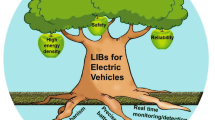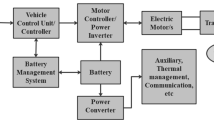Abstract
This paper deals with the implementation and analysis of real-time energy monitoring of the transient state of the wire electrical discharge machining (WEDM) process. Recently, sparking frequency information has been applied to control of the WEDM process, making more stable and efficient machining. Experimental results, however, show the limitations and insufficiency of that method. Instead of using the sparking frequency monitoring method, the use of a real-time instantaneous energy monitoring system is suggested for interpreting the state of the WEDM process in more precise detail. The transient state of the WEDM process is analyzed in detail with the developed system, and a transient stability criterion of the WEDM process is suggested.
Similar content being viewed by others
References
Tarng YS, Ma SC, Chung LK (1995) Determination of optimal cutting parameters in wire electrical discharge machining process. J Precision Eng 20:5–15
Spedding TA, Wang ZQ (1997) Study on modeling of wire EDM process. J Mater Process Technol 69:18–28
Snoeys R, Dekeyser W, Tricarico C (1988) Knowledge-based systems for wire EDM. Ann CIRP 37:197–202
Rajurkar KP, Wand WM (1991) On-line monitor and control for wire breakage in WEDM. Ann CIRP 40(1):219–222
Watanabe H, Sato T, Suzuki I (1990) WEDM monitoring with a statistical pulse classification method. Ann CIRP 39(1):175–179
Huang YH, Zhao GG, Zhang ZR, Yu CY (1986) The identification and its means of servo feed adaptive control system in WEDM. Ann CIRP 35(1):121–123
Kinoshita N (1982) Control of Wire-EDM preventing electrode from breaking. Ann CIRP 31(1):111–114
Liao YS, Woo JC (2000) Design of a fuzzy controller for adaptive control of WEDM process. Int J Mach Tools Manuf 40:2293–2307
Liao YS, Chu YY, Yan MT (1997) Study of wire breaking process and monitoring of WEDM. Int J Mach Tools Manuf 37:555–567
Rajurkar KP, Wang WM, Zhao WS (1997) WEDM-adaptive control with a multiple input model for identification of workpiece height. Ann CIRP 46(1):147–150
Yan MT, Liao YS (1998) Adaptive control of the WEDM process using the fuzzy control strategy. J Manuf Sys 17(4): 263–274
Yamada H, Mohri N, Furutani K (1997) Transient response of wire electrode in wire electrical discharge machining. J ASPE 16:307–311
Murphy KS (1997) An appropriate model for EDM wire vibrations and its implications for stability. Trans Soc Manuf Eng 25:171–176
Tarng YS, Tseng CM, Chung LK (1997) A fuzzy pulse discriminating system for electrical discharging machining. Int J Mach Tools Manuf 37(4):511–522
Luo YF (1999) Rupture failure and mechanical strength of the electrode wire used in wire EDM. J Mater Process Technol 94:208–215
Author information
Authors and Affiliations
Corresponding author
Rights and permissions
About this article
Cite this article
Kwon, S., Yang, MY. The benefits of using instantaneous energy to monitor the transient state of the wire EDM process. Int J Adv Manuf Technol 27, 930–938 (2006). https://doi.org/10.1007/s00170-004-2252-y
Received:
Accepted:
Published:
Issue Date:
DOI: https://doi.org/10.1007/s00170-004-2252-y




